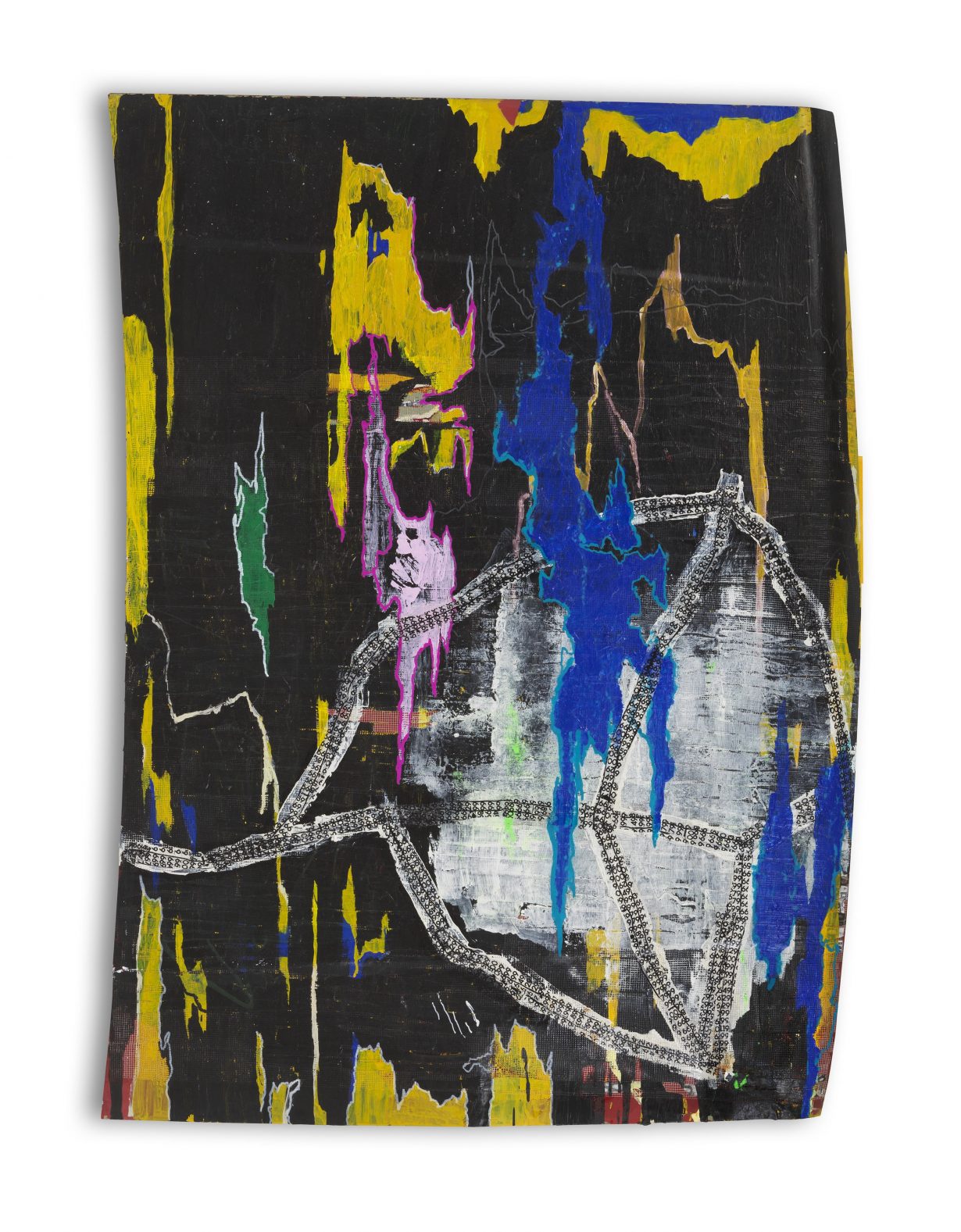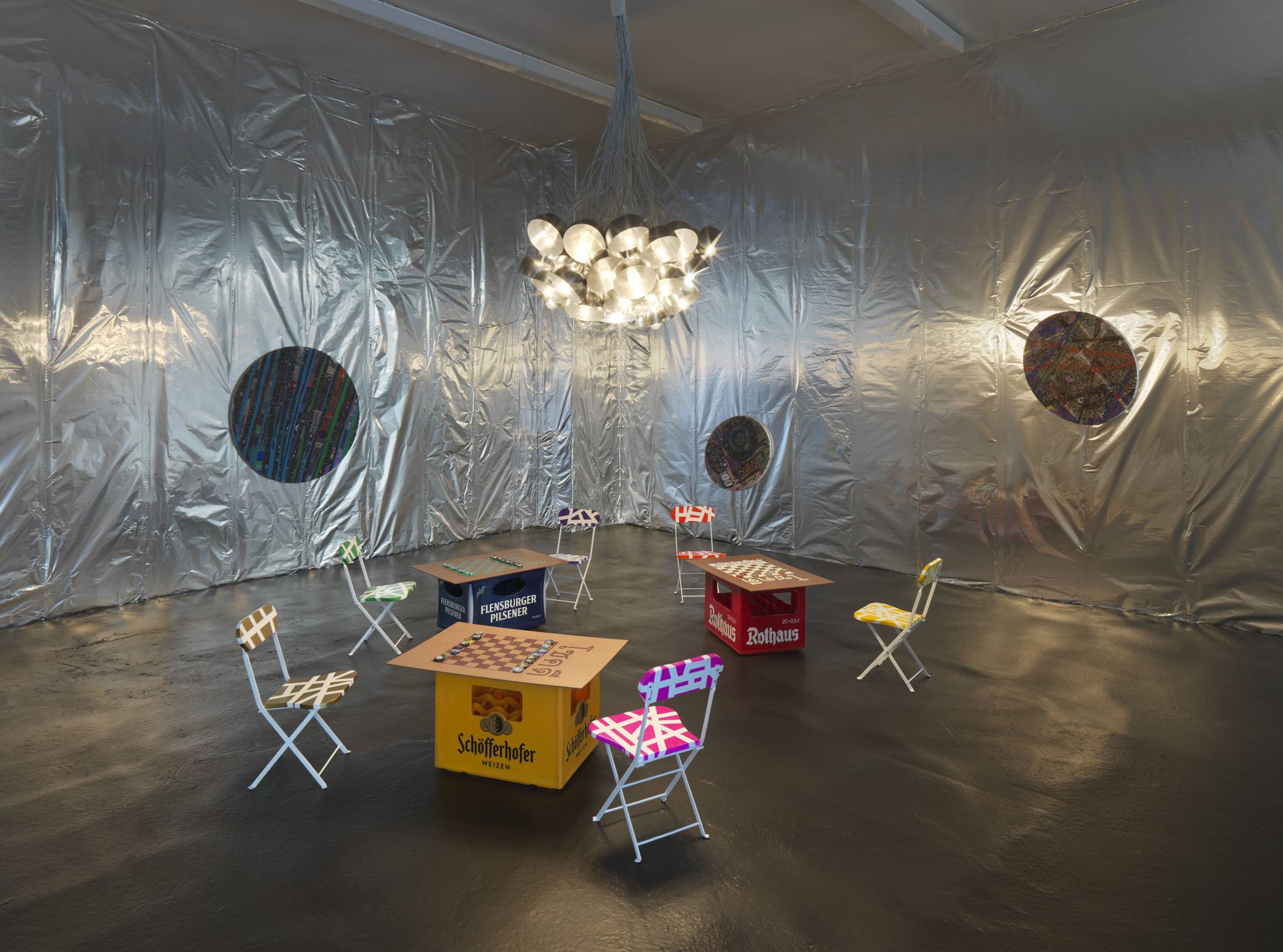The Thai artist’s pop-inflected collage-paintings are underpinned as much by the adaptability of the immigrant mindset as they are globalised modernist aesthetics
Udomsak Krisanamis’s origin story is well rehearsed by now, but since it continues to inflect his art, let’s spell it out again. In 1991, when the Thai artist arrived at the Art Institute of Chicago in his mid-twenties, after studying in his home city of Bangkok, he barely spoke a word of English. Krisanamis began to learn the language by reading American newspapers, pencilling out the words he knew and looking up the remaining mysteries. This meticulous process, which led to pagefuls of darkness glimmering with luminous unknowns, led in turn to the redaction aesthetic of his early works. These collage-paintings, reminiscent of a star field, featured crisscrossing blacked-out strips of newsprint stippled with white dots, underneath all of which lay another, legible language. This stylistic undergirding has lingered in Krisanamis’s practice even as he’s overlaid it with different compositional structures, whether grids, wobbly verticals and oceanic horizontal ripples, clear-cut circles or near-monochromes. Perhaps not surprisingly, a baseline of newsprint collage structures several of the 14 paintings in the artist’s first show with Neugerriemschneider.
In the eponymous, horizontal-format Light My Way (2024), for example, a tactile expanse of pasted-down, dotted black stripes is intricately divided by wavering white lines that, together, suggest flaking tree-bark or painterly craquelure, flecked with flashes of primary colour and interrupted here and there by waveformlike regions of unpainted newsprint, rhythmically pulsing with printed sixes and nines. A faint row of largish outlined black circles, or zeroes, marches across the canvas’s upper half. Step right back and you could be looking at something organic. Or perhaps be reminded of a painting by Abstract Expressionist Clyfford Still – references to whom, seemingly as a shorthand for the history of abstraction, are more explicit elsewhere. See, for instance, the jagged contours within 2023’s Too Fast to Handle, painted on a surface that has been crisscrossed with heavyweight packing tape. Move in on Krisanamis’s work and the sense of abstraction all but dissolves, leaving you in a matrix of numbers and codification. Numbers, in our world (and maybe beyond it), underlie everything.

This sustained tension or would-be rapprochement between abstraction and information flows has been Krisanamis’s basecamp for a long time, likely because it’s an unplumbable well: the viewer receives the high-end pleasures of art without feeling cut off from quotidian reality, as well as recognising that painting still has the potential to develop through material innovations. You can construe, here, a narrative of creative immigrant adaptation in the approach to language learning, language bending; or enjoy the febrile pleasures of modernist aesthetics updated and globalised. In I Wish I Knew (2024), Krisanamis paints overlapping, Pop-flavoured black ovals – with callbacks, in the handling, to both Andy Warhol and Roy Lichtenstein – on a doorlike side of an art transit case, outlining and highlighting the ‘FRAGILE’ warnings. Bright painted swathes of tomato red and cerulean have been added, and, for good measure, the phrase ‘POCAHONTAS + ZARATHUSTRA’ is stencilled next to a Venn diagram at the bottom. You might, here, get caught up in trying to connect Native American land rights and Friedrich Nietzsche, though only if you’re not aware of the eponymous, wackily named art-handling company.
In the back room, perhaps in a nod to the art-design-architecture hybrids of longtime gallery artist Jorge Pardo, Krisanamis further blurs painting with everything else. He drapes the walls with Warhol-ish silvery material and suspends a sculptural cluster of lamps from the ceiling, below which are a trio of hand-painted checkers sets – decorated with Thai script, with bottlecaps for pieces – sat on German beer crates and ringed by little chairs cheerily and cheaply patterned with striped tape. It all suggests a modest but quite cool bar, perhaps serving Thais here in Berlin. Two more dark-toned tickertape paintings hang on the rumpled walls; a third, full of scruffy Cubist patterning and with a pattern of colourful, circular plastic plates attached, is casually propped. This scenario, taken in sum, suggests an analogue to Krisanamis’s painting practice: a convocation of competing energies and still-circulating ghosts, and a reminder that for him abstract painting never stops, dreaming of formalist autonomy, at its edges. It moves through the world while the world moves through it.
Udomsak Krisanamis, light my way, Neugerriemschneider, Berlin, 11 September – 9 November
